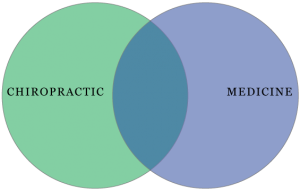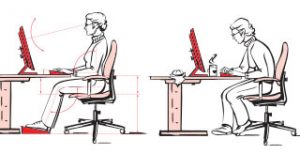- New Patient Line:
- (907) 336-0200


Do you live with scoliosis? Has your child been diagnosed with scoliosis? Have you been told it’s “idiopathic” scoliosis, and the only thing to do is wait and see if it gets bad enough to need a brace? Or surgery?
If you’ve been diagnosed with “idiopathic” scoliosis, you’ll read below the two most important facts you need to know to avoid the progression of scoliosis, and how to actually improve your current degree of spinal curvature without the pain and toil of bracing or surgery.
The first thing to understand is that there are 3 main types of scoliosis:
- Idiopathic scoliosis
- Congenital scoliosis
- Neuromuscular scoliosis
By far, the most common type of scoliosis is idiopathic scoliosis, and this is the type of scoliosis we’re talking about here.
The term “idiopathic” is used to describe a condition that doesn’t have any known cause. Which means that in over 80% of scoliosis cases the doctor tells the patient that nobody knows what is causing the spine to curve abnormally.
This is point where most people dealing with a scoliosis diagnosis are faced with making an assumption that can soetimes lead to a lifetime of spinal and neurological problems.
Fact #1: “Idiopathic” scoliosis often isn’t idiopathic at all.
When the doctor announces that there is no known cause of your scoliosis, it’s easy to assume that’s just how it is. After all, they’re trained in the field of medicine and should know.
But that assumption isn’t always correct.
The field of medicine encompasses a certain body of knowledge regarding the treatment of symptoms and diseases – and while large, that body of knowledge is finite. Likewise, the field of chiropractic encompasses a different body of knowledge. Specifically, chiropractic deals with the cause and effect relationship between your spinal column, the nervous sy stem, and your health.
stem, and your health.
What this means is that a case of scoliosis that is labeled idiopathic, or “cause unknown” within the medical field, may be found to have a thoroughly explainable (and correctable) cause when examined within the chiropractic scope of practice.
This is why the worst assumption you can make when you or your child has been diagnosed with idiopathic scoliosis is that nothing can be done.
You might be told that the scoliosis isn’t “bad enough” for bracing yet, so “we’re going to wait & see if it continues to progress.” All too often the scoliosis does progress, leading to more aggressive medical interventions like bracing or surgery.
The tragedy is that instead of just waiting to see if your scoliosis gets “bad enough” for bracing, there’s a good chance you could actually be doing something to correct the cause of your spinal curvature.
Early distinction between scoliosis that is truly idiopathic versus those that are mislabeled as idiopathic is even more crucial when you take into account the fact that a correctable scoliosis becomes less and less correctable the older a child gets.
In adults who have completed their bone growth, the progressive worsening of scoliosis curves can often be arrested, but often the curves that have developed will correct only minimally due to their advanced stage of skeletal development.
The bottom line is that the earlier a correctable cause is the identified, the better the chance for complete resolution. The hallmark of correctable scoliosis is an underlying dysfunction known as “spastic contracture.” It affects the anti-gravity, or postural muscles that normally keep your axial skeleton (head, spine & pelvis) straight and level. Because most medical doctors fail to check scoliosis patients for the presence of spastic contracture, many are mislabeled as “idiopathic.” Spastic contracture occurs when the muscle tone of the anti-gravity muscles on one side of the body is slightly tighter than the opposite side. As a result, the pelvis, and spinal vertebrae lose the balance necessary to maintain their normal positions. If you’re an adult this can cause a number of issues, including pain and nerve problems–but in a child the result can be permanently debilitating because their bones are still growing. Similarly, a child with spastic contracture grows under the constant influence of postural muscles that pull one side of the spine and pelvis more than the opposite side. Curves develop as the natural tendency to grow upward battles with the muscular imbalance. If the spastic contracture of postural muscles is corrected before the child reaches skeletal maturity, the curvature is better able to correct itself and a permanent curvature can often be avoided. But the longer a child’s growing spine is under the influence of imbalance musculature, the more permanent scoliotic curvatures become. So when faced with a diagnosis of “idiopathic” scoliosis, remember that you may have better options than just waiting to see if it continues to worsen. Upper cervical chiropractors trained and certified by the National Upper Cervical Chiropractic Association (NUCCA) are specially equipped to identify spastic contracture in children and adults. When present, NUCCA practitioners are able to analyze and correct the source of spastic contracture quickly and painlessly. I have worked with individuals from 3 years old to over 80 years old to correct scoliotic curvature in the spine. Many see dramatic improvement in spinal alignment, pain, and related problems that develop alongside scoliotic deformity. Looking for a second opinion for yourself or your child? Use the contact form to set up a phone call or appointment.
Fact #2: Mislabeled “idiopathic” scoliosis can be identified without invasive or costly testing.
 A good analogy would be a tree growing on a mountainside that is constantly being buffeted by the wind on one side. When young, the supple trunk and branches bend to one side with the force of the wind while still attempting to grow upward toward the light. Eventually the tree matures and the trunk thickens to the point where it no longer bends–but the influence of the wind has created a mature tree that will forever be bent and twisted.
A good analogy would be a tree growing on a mountainside that is constantly being buffeted by the wind on one side. When young, the supple trunk and branches bend to one side with the force of the wind while still attempting to grow upward toward the light. Eventually the tree matures and the trunk thickens to the point where it no longer bends–but the influence of the wind has created a mature tree that will forever be bent and twisted.

